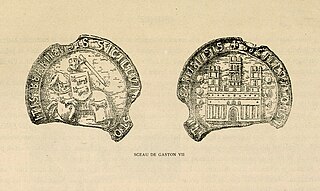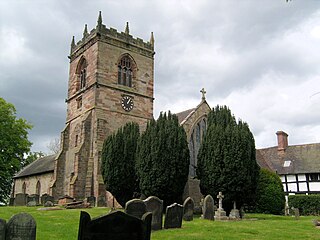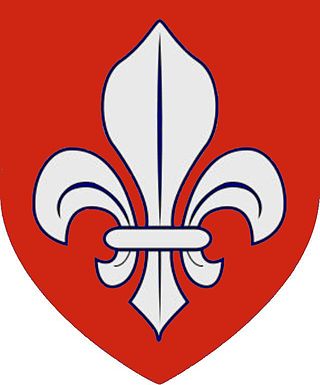Peter II, called the Little Charlemagne, was Count of Savoy from 1263 until his death in 1268. He was also holder of the Honour of Richmond, Yorkshire, England, the Honour of the Eagle also known as the Honour of Pevensey and the Honour of Eu also known as the Honour of Hastings. His significant land holdings in Sussex were also marked by his holding of the wardship of John de Warenne, 6th Earl of Surrey which brought with it lands centred upon Lewes castle. Briefly, from 1241 until 1242, castellan of Dover Castle and Keeper of the Coast. In 1243 he was granted land by the Thames in London where he later built the Savoy Palace.
Sir John Maunsell, Provost of Beverley Minster, was a king's clerk and a judge. He served as chancellor to King Henry III and was England's first secretary of state.
Sir Bertram de Criol was a senior and trusted Steward and diplomat to King Henry III. He served as Constable and Keeper of Dover Castle, Keeper of the Coast and of the Cinque Ports, Keeper of the receipts, expenses and wardships of the archbishopric of Canterbury, Constable of the Tower of London and Sheriff of Kent.

Nicholas de Crioll, of a family seated in Kent, was Constable of Dover Castle and Keeper of the Coast during the early 1260s. His kinsman Bertram de Criol had distinguished himself in these offices during the preceding 20 years and both were near predecessors of the eminent Warden of the Cinque Ports, Stephen de Pencester.

Richard de Clare, 5th Earl of Hertford, 6th Earl of Gloucester, 2nd Lord of Glamorgan, 8th Lord of Clare was the son of Gilbert de Clare, 4th Earl of Hertford, and Isabel Marshal. He was also a powerful Marcher Lord in Wales and inherited the Lordship of Glamorgan upon the death of his father. He played a prominent role in the constitutional crisis of 1258–1263.

William of Savoy was a bishop from the House of Savoy. He was a son of Thomas, Count of Savoy and Margaret of Geneva. He was elected bishop of Valence in 1224. He negotiated the weddings of queens, and was an advisor to Henry III of England. Between his religious roles and his family relations, his influence was noted from London to Rome.
Events from the 1240s in England.

Gaston VII de Montcada, called Froissard, was the twentieth Viscount of Béarn from 1229. He was the son and heir of Guillermo II de Montcada of the House of Montcada and of Garsenda, daughter of Alfonso II of Provence and Garsenda of Forcalquier. He was succeeded by Roger-Bernard III of Foix.

Lapley Priory was a priory in Staffordshire, England. Founded at the very end of the Anglo-Saxon period, it was an alien priory, a satellite house of the Benedictine Abbey of Saint-Remi or Saint-Rémy at Reims in Northern France. After great fluctuations in fortune, resulting from changing relations between the rulers of England and France, it was finally dissolved in 1415 and its assets transferred to the collegiate church at Tong, Shropshire.
John de Echingham S.T.D. was an English medieval Chancellor of the University of Oxford, who held that dignity for three consecutive years.
William Devereux (1219–1265) was an important Marcher Lord who held Lyonshall Castle controlling a strategically vital approach to the border of Wales. The castle's significance was heightened by the rebellion of Llywelyn ap Gruffudd, Prince of Wales. With strong family ties to the politically powerful families of Cantilupe and Giffard, his support was strongly sought after by Henry III and Simon de Montfort throughout the Second Barons' War.

The recorded abbots of Shrewsbury run from c 1087, four years after Shrewsbury Abbey's foundation, to 1540, its dissolution under Thomas Cromwell. The abbey was large and well-endowed and the abbots were often important political figures as well as ecclesiastical leaders. They varied greatly over the centuries in ethnic and social origins, intellectual attainments and holiness of life. The first two, Fulchred and Godfred, were imported from Normandy. The remainder seem to have been born in Britain and most, but not all, were elected, or at least selected, from the chapter of the abbey. As important territorial magnates, the abbots were always called to take part in the sessions of Parliament from its very beginnings as an institution in 1265. As important figures in the Western Catholic Church, abbots were permitted by the Pope to wear the pontifical ring from 1251 and the mitre from 1397.

The Aguillon family, of French origin, were feudal landowners in England who held estates in several southern counties from before 1135 to 1312. Surviving records suggest various branches which all ended without male heirs, the lands going to daughters or sisters and their husbands. The family seems to have been initially associated, perhaps as under-tenants and maybe through marriage, with the Marmion family, witnessing charters alongside them in Normandy in 1106 and later occupying their land in England.
Walter Devereux of Bodenham and Bromwich was an Anglo-Norman knight and sheriff of Herefordshire living during the reigns of Henry III of England and Edward I of England. The Devereux were a prominent family along the Welsh Marches during the thirteenth century, and integral to the control of this region during the Second Barons' War.
Nicholas Devereux II of Chanston (Vowchurch) was an Anglo-Norman nobleman living during the reigns of Henry III of England. The Devereux were a prominent knightly family along the Welsh Marches during the thirteenth century, and Nicholas would play an integral role in attempts to control the Welsh Marches during the thirteenth century.
The Fine rolls are a collection of financial records maintained by the English Chancery in the Middle Ages. Originating in the reign of King Henry III of England (1216–72), a fine represented a willingness to pay the crown a sum of money in exchange for a particular concession. In the medieval style of document storage of enrollment, the rolls which recorded these payments are called the Fine rolls.

Pierre de Champvent was a noble originally from Savoy who made a career as a military and courtier in England.

William of Champvent or Guillaume de Champvent was the son of Henri, Lord of Champvent, brother of Othon de Champvent and Pierre de Champvent, cousin of Otto de Grandson. He followed Peter II, Count of Savoy to England and served King Henry III of England as a diplomat. His church career in England, being a dean of St. Martin's Le Grand in London from 1262. His influence at court in 1262 is evidenced by his joining the Savoyard witness list for a charter relating to Queen Alianor’s dowry. Upon his departure back to Lausanne Edward I of England would appoint Louis I of Vaud to St. Martin's Le Grand

Peter of Geneva or Pierre de Genève was the son of Humbert, Count of Geneva, and grandson of William I.









